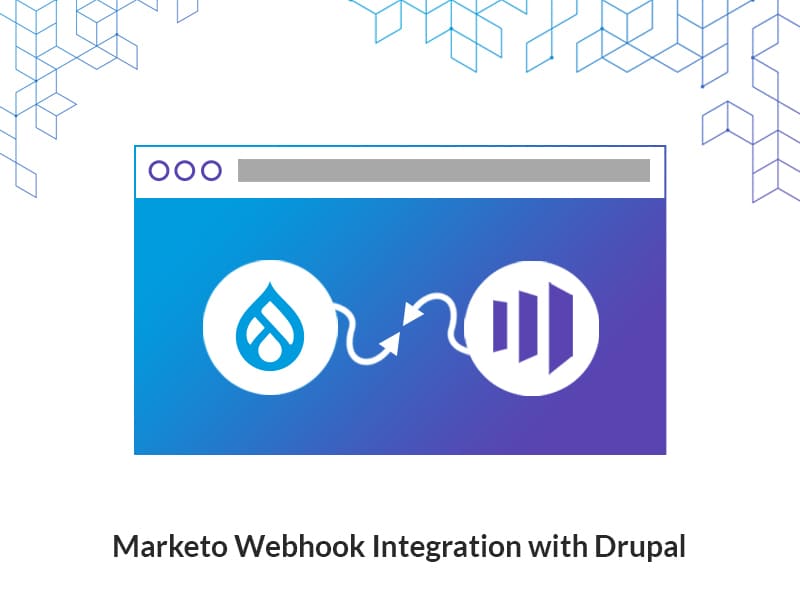Author:
Source
Sponsored:
Atlas of AI: Power, Politics, and the Planetary Costs of Artificial Intelligence - Audiobook

Uncover the true cost of artificial intelligence.
Listen now, and see the system behind the screens before the future listens to you. = > Atlas of AI $0.00 with trial. Read by Larissa Gallagher
Keeping your content fresh and relevant is one of the best things you can do to maintain user engagement on your website, but a CMS like Drupal offers so much more than just that. From creating personalized experiences to integrating interactive elements, Drupal empowers you to build a dynamic, engaging website that keeps users coming back for more.
In this blog, I’ll explore the benefits of creating an engaging website for your business and introduce 8 fantastic Drupal modules that can boost user engagement. Let’s get started!
Why is user engagement important anyway
Profitable B2B, B2C, or SaaS companies use effective user engagement as one of their KPIs to demonstrate the value they’re offering to their customers through their services. Engagement is crucial to achieving all marketing goals if you want to boost your website traffic, establish brand awareness, or launch social media campaigns.
Driving higher user engagement draws substantial benefits for your business.
You get sustained audience attention
Build stronger emotional bonds with customers
Increase in repeated customers gradually
Brand advocacy from loyal customers
Shortened sales cycles
You can track your user engagement using various user engagement metrics such as customer base growth, average customer value, and churn rate. Your users engage with your business via social media, your company website, and product or service purchases. Here are some common metrics that help measure user engagement:
Page/scroll depth
Page views
Conversions
Time spent on the page/site
Pages per session
Bounce rate
And more…
How can you improve user engagement
With advanced technology and a rise in user expectations, it is only essential to refine websites for optimized user experiences. To begin with, here’s what you can do to improve user engagement:
Identify and cater to your target audience: Understand your target audience and customize your content to meet their expectations and preferences.
Implement a design that adapts to various devices: Build a responsive website that is adaptable to various devices whether laptop, desktop, mobile, or tablet. It helps deliver a seamless experience with a responsive design and optimum website functionality.
Ensure easy-to-use navigation: Develop an intuitive web design, easy to navigate, providing users with what they look for with clear menus and search functionality.
Utilize personalized content and experiences: Craft your content, recommendations, and CTAs based on user preferences, behavior, and demographics.
Incorporate interactive features and social media integration: Analyze user behavior and gather feedback by implementing interactive elements like forms, surveys, quizzes, polls, etc. Integrate social media buttons on your website for social engagement and brand awareness.
Optimize page load time: Reduce bounce rates with the help of leveraging caching, optimized images, compressing files, utilizing CDNs, etc., to optimize page load times for an enhanced user experience.
Top 8 Drupal modules to boost user engagement
There can be pretty small yet essential elements that can contribute to boosting user engagement, meeting user preferences, and generating valuable statistics. Drupal’s active community continuously develops innovative modules and themes to boost engagement. I have gathered a list of 8 Drupal modules that you can use to build user engagement through your website.
1. Webform
Image source: Drupal .org
The Webform module is one of the most important Drupal modules that bridges the gap between you and your audience. It helps engage your audience, gather insights about their preferences, maintain interaction with your regular customers, track marketing analytics, and offer assistance as and when required.
This module allows you to collect data in any form that is submitted to the application or system. These forms are customizable based on any behavior or aspect. Whether you need a form with multiple pages or multiple columns with conditional logic or a simple, basic form that pushes data to Salesforce/CRM, the Webform module makes it all possible.
Users can enter their data through these forms – contact forms, feedback forms, job applications, support requests, subscription forms, surveys, appointment forms, and other types of forms as required for your business and marketing goals.
Webforms feature text fields, checkboxes, select menus, radio buttons, and more. Administrators can enhance their features using placeholders for required data formats, autocomplete options, and relevant text to improve user-friendliness. Drupal’s webforms adhere to specific web accessibility standards that ensure seamless functionality even for differently-abled individuals. This includes clear labels, easily associated form validation, and keyboard accessibility. Take a deeper dive into the Webform module in this article.
2. Flag
You might dog-ear pages of a novel to mark where you left off or use bookmarks to keep track. The Flag module in Drupal offers similar functionality.
It’s an adaptable flagging system, fully customizable by administrators. Admins can create numerous flags for nodes, comments, users, and additional entities.
Any website featuring user-generated content may require monitoring for spam and adherence to submission guidelines. The Flag Drupal module allows users to mark (or bookmark) content for future reference. Users have the ability to “Add to wishlist,” “Mark as inappropriate,” “Add to bookmarks,” or “Flag as helpful,” as part of this module’s functionalities.
Flags can be either per-user, letting individuals mark items independently, or global, meaning any user’s action affects everyone. This flexibility allows additional flags (similar to published or sticky) to be applied to nodes or other elements, managed according to admin preferences.
Additionally, the module’s integration with Views allows you to build custom lists of popular content or monitor key items.
3. Poll
Image source: Drupal .org
Just like you can vote your opinion on Instagram stories and posts nowadays, the Poll module in Drupal enables users to vote among multiple choices.
You can create and manage multiple polls. These polls can be customized among options such as anonymous voting, setting voting requirements, or toggling open/closed status. Administrators can create a block that highlights the most recent poll. Additionally, this module can also be integrated with Views, so admins can create their own blocks and pages. The best thing about these polls is that they are multilingual. Users in any part of the globe can choose their preferences in their respective languages.
4. Node Read Time
Image source: Drupal .org
Time is precious and you’d like your time to be respected. Many websites understand this sentiment and value their readers’ precious time. When you read a blog on such websites, you may have noticed at the top of the blog that it mentions the time required to read that particular blog. The Node Read Time module in Drupal is behind this feature of Drupal websites.
The Node Read Time module allows admins to add an extra field of content types to showcase the time taken for users to read a node. This field considers all text fields in the content type and entity version revision fields like Paragraphs and Custom Blocks.
Additionally, the configuration page of this module allows you to enable the reading time field for specific content types. You can also set the “words per minute” value for your users to calculate the reading time. Users usually get to view the time in minutes or minutes and seconds.
5. Like/Dislike
Image source: Drupal .org
If you want to understand how your readers perceive your blogs, this module can help.
The Like/Dislike Drupal module allows you to implement a customizable like and dislike widget anywhere on your site. With the help of the Voting API, the module securely stores, retrieves, and tallies user votes. You can easily configure its settings through a dedicated page to specify which content types or entities the widget should apply to.
Users can simply hit the like or dislike button on the page to express their approval or disapproval of your site content. However, be mindful of the fact that only authenticated users can engage with the like or dislike option. Anonymous users are required to log in or register to cast their vote.
6. Commerce Wishlist
When we shop online, we mostly tend to “Add to Wishlist” to save our preferences for a later buying decision. The Commerce Wishlist module in Drupal offers such Wishlist functionality. This module is specifically developed for e-commerce websites. With the help of this module, admins can create a dedicated wishlist page, along with a customizable block. Its integration with the Views module makes it easier for straightforward customization.
With the help of this module, admins can add an “Add to Wishlist” button on every product display node. You can also generate a customizable list using Views to showcase all Wishlist products. Users can effortlessly remove or transfer Wishlist items to their Shopping Cart with a simple click.
7. Quiz
Image source: Drupal .org
Have you ever participated in a quiz tournament? While this quiz isn’t related to that one, they do share a common trait. But if you look at it this way, the tournament brings into the limelight the winner who knew the highest number of answers to the questions. It highlights their knowledge of different subjects/topics.
The Quiz module in Drupal gathers insights from users with the help of graded assessments that consist of a series of questions. These responses are then stored in the database. The scores and results of these quizzes are displayed during or after completion.
Admins can use its intuitive drag-and-drop interface to order the questions (and answers) and pages. Admins can also customize the number of questions on every page. Additionally, the module allows dummy Quiz generation, along with Question and Result data with Devel. The questions can also be randomized where multiple attempts are allowed per user. Admins have the option to provide feedback manually or automatically. Here are the versatile application options of the Quiz module:
Integration into larger Learning Management Systems (LMS) or as a supplementary classroom activity
Standalone functionality supporting multimedia-rich content in questions and answers
Adaptive mode for self-paced learning with multiple attempts
Training programs allowing iterative improvement attempts
8. Advanced Content Feedback (Admin Feedback)
Image source: Drupal .org
Last on my list is a crucial Drupal module that is most helpful in gathering insights about your site’s content. To understand if you’re providing relevant content for your users, you need to be mindful of their preferences. Feedback is a traditional yet proven and useful approach to gathering insights into your users’ preferences.
The Admin Feedback module in Drupal allows users to submit feedback on content (nodes) via AJAX requests and ensures a seamless user experience without redirects. The insights from this feedback are then monitored, analyzed, and inspected by administrators from the dashboard.
This module facilitates direct improvements based on client feedback gathered via FAQ or help pages seeking user input to enhance content quality. It includes a permission system to control feedback submission and analysis by specific roles. Admins work via two significant features of the Admin Feedback module for its optimum purpose:
Feedback Block – This feature offers a customizable form on various content types for users to provide positive or negative feedback backed with optional messages.
Content Feedback Dashboard – Accessible at /admin/content/feedback, this dashboard displays all user feedback with permissions to manage access. It offers two views: Summary View and Detail View.
Other Drupal Modules that promote user engagement
Apart from the previously mentioned modules, here are a few additional Drupal modules that help improve engagement of your Drupal site:
Simple Feedback Survey: This module is an alternative to survey forms to collect data from users visiting your site.
Website Feedback: This module allows users (with permission) to submit feedback comments along with a screenshot of the page.
Reviews: This module allows authenticated users to submit their reviews about the site content.
Social Media Share: As the name suggests, this module allows users to share the current site page to various social media platforms like Twitter (X), Facebook, LinkedIn, WhatsApp, Pinterest, and email.
Social Auth Google: This module allows users to register and log in to a Drupal website via their Google account.
Final Thoughts
Your website is the face of your brand, and users are drawn to businesses that offer a seamless experience, engaging them with interactive features and personalized content. Drupal is an excellent tool for achieving just that. If you’re looking for a reliable Drupal development company to help improve your user engagement with your Drupal website, let’s make it happen together! Contact us today to get started!






